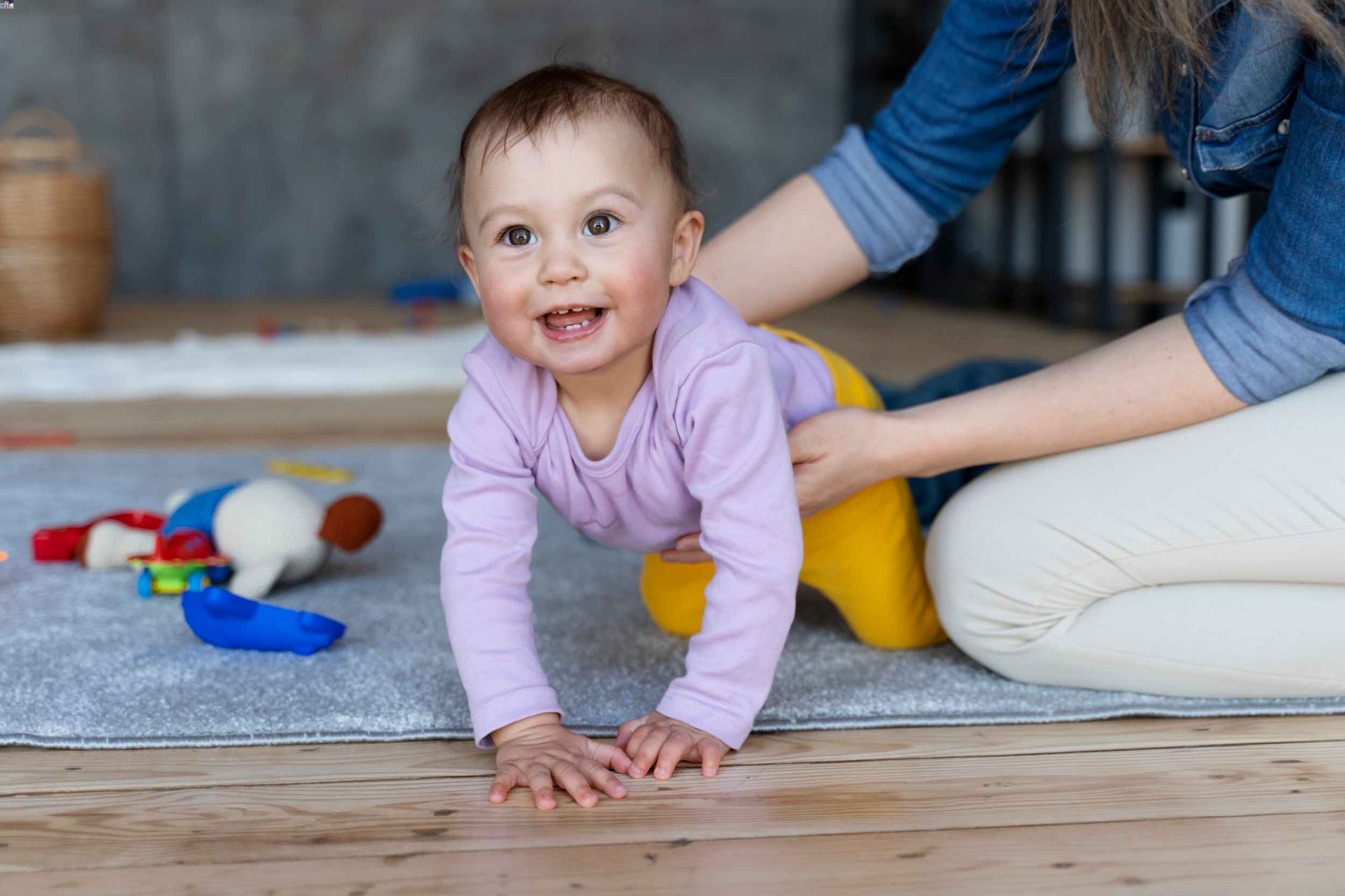When your little one is just starting to explore their surroundings, it can feel like they’re going at it at warp speed. And sometimes, you just don’t understand what will be the next step. Getting your baby to crawl is no exception to this rule, and for a good reason. It’s a milestone that signals the beginning of a new phase in their development and will result in more independence and mobility as they grow. The sooner your baby learns to crawl, the sooner they’ll begin to learn about their world — and the sooner you’ll be one step ahead of them in this case.
A baby’s first steps into crawling can feel like an anxious rollercoaster for many parents. One minute, you’re terrified that your baby won’t be able to make it. Next, you’re elated because they’re already up and moving around! By now, you’ve probably realized that crawling is a natural movement that your baby will be able to repeat in short order. But this process won’t come quickly; you’ll probably be asking yourself the same questions we were when we first witnessed our son’s efforts. Here are a few tips on how to help baby crawl safely:

Keep Baby Supervised at All Times
At first, crawling is a very active movement for your baby — and one that they’ll be eager to test out in every corner of the house. To start them off safely, you’ll need to keep an eye on them at all times while they practice. They must be supervised, especially when they’re first starting. If you’re only watching them from a distance, you might miss some crucial cues that could help them progress more quickly.
That’s why it’s a good idea to bring your baby into the room whenever you need to leave the house. This way, you can always be assured that they’re safe and supervised, even if you can’t be there in person. You can also stay connected via a webcam or a baby monitor if you work from home. This way, you’ll be able to see exactly what your baby is up to, but you’ll still be able to take care of other tasks while practicing.
Try Other Activities While Your Baby Learns to Crawl
While you wait for your little one to start crawling, you can do a few things you can consider how to help baby crawl:
- Keep your baby’s bed close to the floor and get used to them crawling to and from it
- Encourage your baby to crawl between your legs while sitting or standing. This will help them feel the motion they’ll need to use while crawling
- Walk or stand while your baby crawls behind you, mimicking the motion they’ll need to crawl
- Get a baby walker or rolling crib that allows your baby to crawl. This will give them something to grasp while they move, and it will also help them get a feel for the rhythmic side-to-side motion that they’ll need to use while crawling
Light up the room!
It’s no secret that babies love bright lights — but it’s especially true for their first few months. As your little one gets used to the dark, you can help them develop their eyesight by turning on some lights.
This isn’t just about improving your baby’s eyesight, either. By lighting up your baby’s room, you can help your baby start to explore their surroundings in new ways and learn to distinguish between the different colors of light. This will help them become more aware of the objects in their environment and begin to understand cause and effect.
Use a walker
Baby walkers have a reputation as a device mainly used as a transitional tool until your baby reaches walking age. But you can use a walker to help your baby learn to crawl! A baby walker allows your little one to practice their crawling skills while they’re held upright — and this can be a great way to help them learn how to move around in a safe and controlled manner.
You can also use a walker while your baby learns how to crawl. When you first start teaching your baby to crawl, you can hold them in a walker as they practice moving around on their hands and knees. You can also help them understand how to use their hands by placing objects on them — for example, a ball or a toy.
Get some help!
If you need some help keeping tabs on your baby while they practice their crawling skills, you might want to consider hiring a babysitter while they’re still relatively young. Depending on your needs and the child-care provider you’re hiring, a babysitter could watch your baby while you go to work or take a break.
When wondering how to help baby crawl, another possibility is to use a baby monitor. This device allows you to listen while your baby practices their crawling skills, and it can come in handy if your child is still relatively young. You can also pair your baby monitor with a smartphone app to always keep checks on your baby from afar.
Related: How to Unspoil a Child
Make it fun
Crawling is a complicated and challenging movement for babies, so it’s essential to keep things fun for them. You can keep your house a happy place and ensure that everything your baby sees is filled with bright, vibrant colors or cute decor.
Keep your baby on their tummy
Your baby must stay on their tummy during their crawling practice sessions. When they’re on their hands and knees, it can be easy for them to slide backward — this is especially true if they’re still learning to walk properly. And since it’s a much harder movement to maintain while they’re on their hands and knees, they’re more likely to slip when they do this.
It’s also essential to keep your baby on their tummy while they practice because it allows them to practice moving their head around. This can help them develop their cognitive skills and coordination.
Help your baby get to grips with crawling
Once your baby has made an effort to crawl, remember that it’s important not to force them. This will only make things more stressful for them, leading to them getting frustrated and giving up before they’ve even managed to get moving!
If crawling is still difficult for your baby, it might be good to seek some help from a certified Pedician.
Read More: How to Teach a Baby to Drink From a Straw
Conclusion
While crawling might feel like a marathon, it’s important to remember that your baby will get there. With patience and encouragement, you’ll be able to see your baby crawling in no time at all.
So remember to keep your head cool and follow the tips mentioned above on how to help your baby crawl as you wait for your baby to start crawling. Your efforts will be rewarded with a new sense of independence and mobility, and your baby will undoubtedly love exploring their surroundings from this new perspective.
There’s no doubt that crawling is a challenging movement for babies. But with the proper preparation and perseverance, your little one will make it to the end.
Even though crawling is hard, your baby will get stronger every day with practice. Keep a positive attitude, and your child will be just fine.







